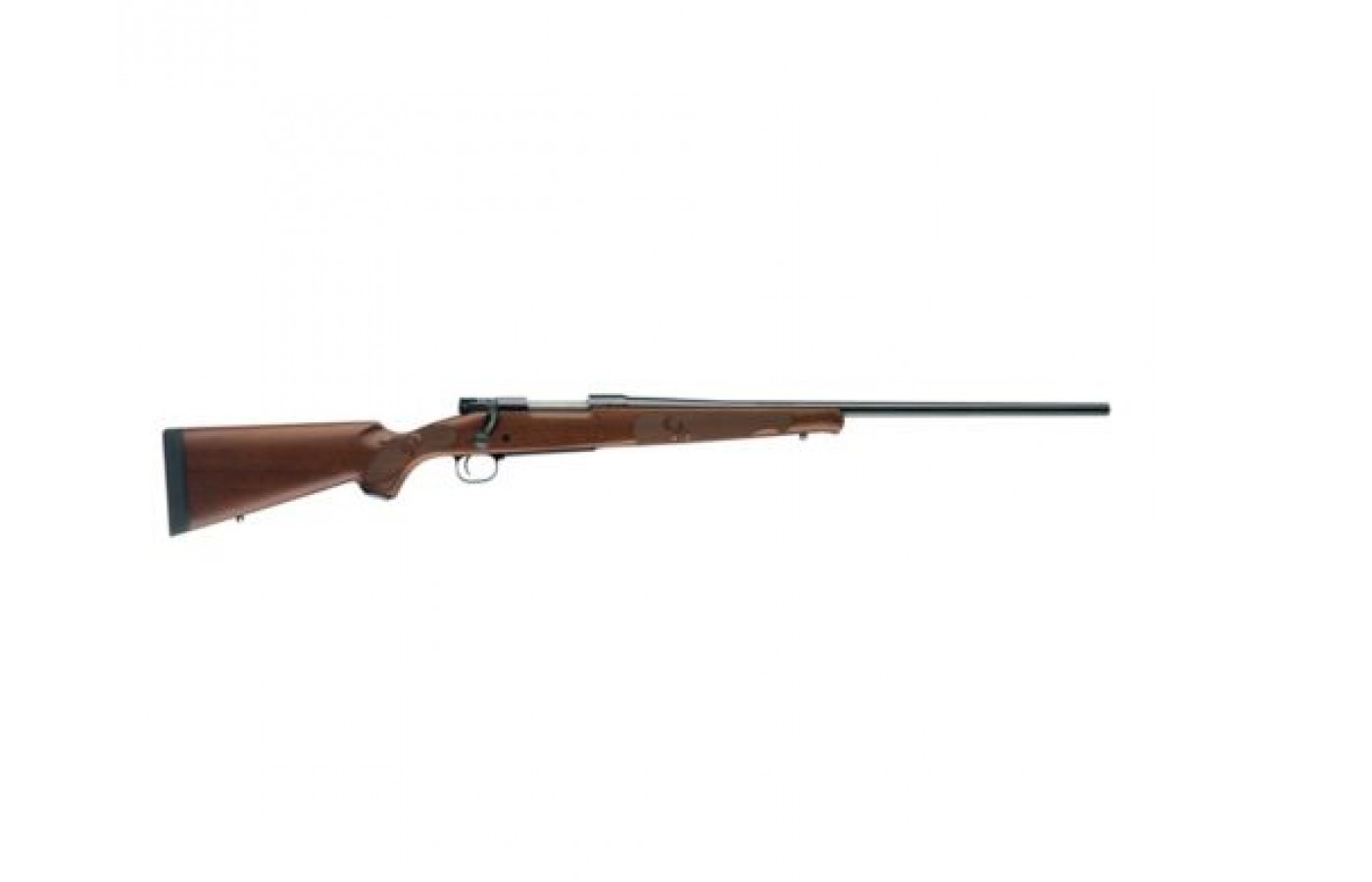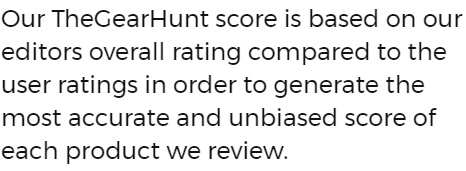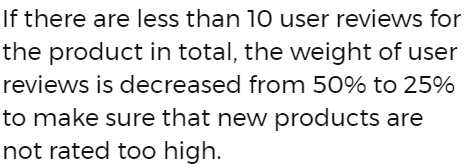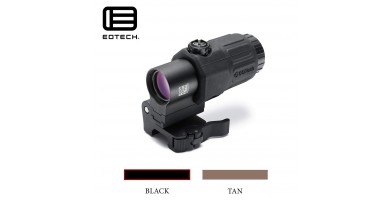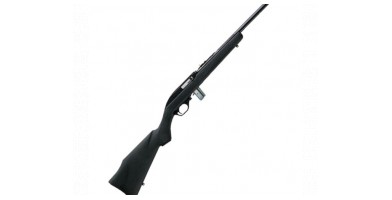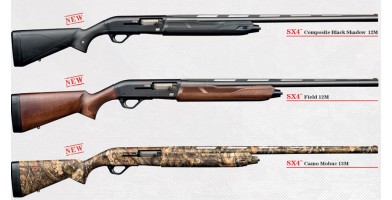Winchester M70
Winchester M70 Review Facts
For a while, Winchester closed its doors in 2006 due to union problems, antiquated machinery, and rising costs. Much to the delight of the shooting public, the Winchester Model 70 with controlled-round feed began being produced in Columbia, South Carolina.
The public liked America’s rifles being made in America. In 2013, the assembly was moved to Portugal. In the global economy of today, the legend and elegance of the Winchester M70 live on. The new rifles may not have the soul of the first Model 70, but modern materials and manufacturing techniques make it the best built and performing Model 70 rifle in history.
Editor's Pros & Cons
Pros
- Bolt opens with the safety on if preferred
- Controlled feed great for hunting
- Factory bedded stock
- No tools needed to field strip the bolt
- Smooth and reliable action
- Trigger pull s adjustable
Cons
- Expensive
- Lightweight causes punishing recoil
History
In 1936, the Winchester Model 70 was introduced. It became a favorite hunting rifle. The rifle was redesigned in 1964 and lost some of its renown. There are still millions of hunters that use the gun for every kind of game.
The rifle was dubbed the ‘Rifleman’s Rifle’ which is high praise in the gun world. Doughboys who came back from Europe after World War I were no longer satisfied with the lever-action rifles chambered for black-powder cartridges after seeing a bolt-action rifle.
Americans wanted a centerfire rifle that was bolt-chambered for powerful smokeless-powder cartridges. In response to the request, Winchester introduced a commercial, centerfire bolt-action rifle. Improvements were made in 1936 that included a steel trigger guard, new bolt stop, a hinged floor plate, and improved safety, and a better trigger.
It also featured two-lug, controlled-round-feed action. The company named the rifle the Model 70. A legend was born. Through the years, the gun was chambered for nearly every cartridge produced. The rife and the .270 cartridge were king of the hill when Jack O’Connor, an up and coming writer sang the praises of the combination.
Until 1964, the Winchester Model 70 was the supreme ruler. Some infamous and drastic changes were instituted. Cheaper parts were used to reduce manufacturing costs. Cut checkering was replaced with a pressed wood pattern. It was not only cheap but ugly. It did nothing to improve the grip of the rifle. Two pieces were brazed together to make the new bolt. It was wobbly and would bind when in use. The bolt did not have the slick feel of the earlier model.
Hammer forging replaces the hand-cut barrel rifling. The floor plate and steel trigger guard were replaced with stamped aluminum alloy parts. Some changes were reversed. Winchester redesigned the bolt in 1968 to run more smoothly and not bind.
In controlled-round feed rifles, the cartridge is captured by a claw-style extractor as it exits the magazine. The cartridge is held against the bolt face as it feeds into the chamber. There are two reasons for its popularity.
One, the gun is less prone to jam, because the shooter operates a controlled-round feed even when the rifle is upside down. It is a desirable feature of dangerous-game hunters. Two, if cartridges stick in the chamber after firing, often the big claw can pull it out. Small push-feed extractor design can rip through the case rim and possibly break it.
The steel floor plate was returned, and a stainless steel magazine follower was added. The hated aluminum trigger guard remained. The rifle became relatively decent, but the damage could not be undone. The legendary gun could not regain the status once placed by shooters. The ‘Classic’ Model 70 line reintroduced controlled-round feed in 1992. Winchester continued offering push-feed versions of the Model 70. As Winchester Short Magnum and Super Short Magnum cartridges were introduced, a hybrid control-round push-feed was developed.
The rifle was dubbed the ‘Rifleman’s Rifle’ which is high praise in the gun world. Doughboys who came back from Europe after World War I were no longer satisfied with the lever-action rifles chambered for black-powder cartridges after seeing a bolt-action rifle.
Americans wanted a centerfire rifle that was bolt-chambered for powerful smokeless-powder cartridges. In response to the request, Winchester introduced a commercial, centerfire bolt-action rifle. Improvements were made in 1936 that included a steel trigger guard, new bolt stop, a hinged floor plate, and improved safety, and a better trigger.
It also featured two-lug, controlled-round-feed action. The company named the rifle the Model 70. A legend was born. Through the years, the gun was chambered for nearly every cartridge produced. The rife and the .270 cartridge were king of the hill when Jack O’Connor, an up and coming writer sang the praises of the combination.
Until 1964, the Winchester Model 70 was the supreme ruler. Some infamous and drastic changes were instituted. Cheaper parts were used to reduce manufacturing costs. Cut checkering was replaced with a pressed wood pattern. It was not only cheap but ugly. It did nothing to improve the grip of the rifle. Two pieces were brazed together to make the new bolt. It was wobbly and would bind when in use. The bolt did not have the slick feel of the earlier model.
Hammer forging replaces the hand-cut barrel rifling. The floor plate and steel trigger guard were replaced with stamped aluminum alloy parts. Some changes were reversed. Winchester redesigned the bolt in 1968 to run more smoothly and not bind.
In controlled-round feed rifles, the cartridge is captured by a claw-style extractor as it exits the magazine. The cartridge is held against the bolt face as it feeds into the chamber. There are two reasons for its popularity.
One, the gun is less prone to jam, because the shooter operates a controlled-round feed even when the rifle is upside down. It is a desirable feature of dangerous-game hunters. Two, if cartridges stick in the chamber after firing, often the big claw can pull it out. Small push-feed extractor design can rip through the case rim and possibly break it.
The steel floor plate was returned, and a stainless steel magazine follower was added. The hated aluminum trigger guard remained. The rifle became relatively decent, but the damage could not be undone. The legendary gun could not regain the status once placed by shooters. The ‘Classic’ Model 70 line reintroduced controlled-round feed in 1992. Winchester continued offering push-feed versions of the Model 70. As Winchester Short Magnum and Super Short Magnum cartridges were introduced, a hybrid control-round push-feed was developed.
Primary Use
The Winchester Model 70 has grown and matured into an excellent weapon for nostalgic sportsmen not wanting to sacrifice functionality. Though there is more recoil, the M70 is a hunting rifle, not a target gun. The Winchester Model 70 recoil can be punishing. It is designed for hunters to hike all day. The rifle is the deer rifle for hunters with a lot of heavy gear. It is a reliable and accurate rifle. The M70 action is optimized for field hunting instead of the rifle range.
Barrel
The M70 has a classic sporter stock. It is attractively finished with beautifully jeweled bolt and The M70 barrel is 22 inches long. It meets and exceeds hunting rifle expectations. The barrel is free-floated. It sports a pencil-profile, light barrel. Groupings barely grow as the temperature of the barrel increases. Even with surplus ammunition, the M70 is an effective lead delivery system.
The average hunter zeros the rifle each before deer season and does not touch it again until the next season. The delivery system is not that important to them. For plinking, it is good to know shots will land where they are meant to land.
Winchester M70 Classic triggers are adjustable when the barrel action is removed from the stock. A tester wanted to see how the light rifle handled during offhand shooting. He was impressed. Though the gun is not balanced like that of an over/under shotgun, it points readily. It blasted and plinked with boring accuracy.
The average hunter zeros the rifle each before deer season and does not touch it again until the next season. The delivery system is not that important to them. For plinking, it is good to know shots will land where they are meant to land.
Winchester M70 Classic triggers are adjustable when the barrel action is removed from the stock. A tester wanted to see how the light rifle handled during offhand shooting. He was impressed. Though the gun is not balanced like that of an over/under shotgun, it points readily. It blasted and plinked with boring accuracy.
Stock Options
The M70 has a classic sporter stock. It is attractively finished with beautifully jeweled bolt and clean checkering. The Featherweight has a stock of American black walnut. It features a comfortable cheek piece and a straight comb. The underlying stock design is a modern classic that correctly positions the eye to be used with a telescopic sight.
There is a comfortable curve in the pistol grip. It is open and set off with a black plastic cap. There is a Schnabel tip on the slender forearm. Attractive three-panel checkering completely wraps around the forearm. The current model has a recoil pad of black rubber set off with a black line spacer.
There is a comfortable curve in the pistol grip. It is open and set off with a black plastic cap. There is a Schnabel tip on the slender forearm. Attractive three-panel checkering completely wraps around the forearm. The current model has a recoil pad of black rubber set off with a black line spacer.
Weight
The Featherweight setup doesn’t do anything to absorb recoil, but hunters praise the seven-pound weight of the rifle when carrying a ten-point deer to their vehicle. The Featherweight is likely the most well-known Model 70.
Accessories
Any accessories for popular bolt guns are available for the M70. The Accuracy McMillan International AICS stock is an exception. McMillan makes furniture that is functionally identical and works with the M70. The only limit is the wallet.
Ammunition
The current Model 70 deserves the ‘Rifleman’s Rifle’ moniker. There are those who feel the .30-06 cartridge is too powerful for the lightweight M70. Likely, they have not hiked several miles with gear in tow to a deer stand.
Due to the recoil, most shoot sparingly, but the gun will keep ticking after countless magazine drops. The shooter’s arm will give out before the Mauser action of the M70 quits. The Winchester M70 is not a ‘Super Grade’ or ‘Custom’ rifle.
The M70 uses 6.5x55mm SE cartridges which is a top choice for Class 2 game hunting. The rifle launches a 140 grain, .264-inch bullet at a speed of 2700 feet per second. The 6.5x55 is typically offered in .30-06 length action.
Most .260 rifles are about a ½ inch shorter than the 6.5x55. The 6.5x55 of the Model 70 Featherweight shares the short action specification instead of standard length action calibers. Though the Model 70 has a slightly longer bolt throw, it is a non-issue.
Due to the recoil, most shoot sparingly, but the gun will keep ticking after countless magazine drops. The shooter’s arm will give out before the Mauser action of the M70 quits. The Winchester M70 is not a ‘Super Grade’ or ‘Custom’ rifle.
The M70 uses 6.5x55mm SE cartridges which is a top choice for Class 2 game hunting. The rifle launches a 140 grain, .264-inch bullet at a speed of 2700 feet per second. The 6.5x55 is typically offered in .30-06 length action.
Most .260 rifles are about a ½ inch shorter than the 6.5x55. The 6.5x55 of the Model 70 Featherweight shares the short action specification instead of standard length action calibers. Though the Model 70 has a slightly longer bolt throw, it is a non-issue.
Loading
The current Model 70 has stronger, lighter action than the original due to CNC machined superior steel. Specs for the Winchester M70 include CRPFS. Those letters stand for Controlled Round Push Feed System.
It is an amalgamation of CRFS and PRFS. Controlled feed action has a turned-bolt that uses a full-length Mauser type extractor to take a large bite on the rim of the case to help extract stuck, dirty, or oversize cases.
A controlled round feed system grabs the cartridge rim and controls it from the time it leaves the magazine until it is in the chamber. A push-round feed system extractor does not grab the rim of the cartridge until it is in the chamber.
The pros and cons of the systems are mind-numbingly technical. Control feed is of more importance when in the field than it is when practicing at the range. The controlled aspect is the design of the extractor that allows a bolt to grab the cartridge from a magazine and insert it in the chamber. A shooter cannot easily short stroke or single load a controlled round system. Technically, the rifle cannot have both controlled round feed and push feed.
The lower portion of the bolt face of the Model 70 is ground flat. It allows sliding the extractor over the rim of the cartridge without skipping over it. In theory, users have the securely controlled round feed system advantages with the ability to single load the rifle like a push pound feed system. The performance of the gun is not affected. Only to bench-rest or purist shooters does it matter, because it is different from the original. Two screws and locknuts.T adjust the Model 70 action pull and sear engagement
There is a knurled ring on the bolt for a positive grip. The bolt is a lever located at the left of the receiver ring in the rear. It is a convenient location in comparison to the bolt release of the Model 700. A coned breech provides smooth and reliable feeding. It is advantageous when fast second shots are required. The difference can be felt when cartridges are cycled through the action.
Five standard diameter cartridges fit in the staggered magazine. The Model 700 holds only four. The M70 has a long bolt throw and large loading port, making reloading fast and easy which is crucial when an emergency arises.
The Model 70 is an improved Mauser type having front locking, 90° bolt lift, two lug action. It is machined from a solid steel block. The flat bottom has maximum metal to wood contact when bedded. It also has a lug that is an integral machined recoil.
If the rifle is swung while reloading while game charging or fleeing, the round does not misalign and cause the action to jam, or will not be thrown from the gun. A double feed jam is nearly impossible with controlled feeding.
With the extractor of the M70, it is recommended that cases be chamber fed via the magazine instead of directly hand feeding, even when making single shots. Controlled-feed action is not as convenient as push-feed action when practicing.
A fixed blade ejector is mounted on the receiver. It allows gentle removal of a spent case manually. Merely slowly open the bolt. It is a convenient feature for reloaders or for rifle range practice. The bolt is pulled back in the manner used to reload while hunting. The spent case is ejected from the action.
It is an amalgamation of CRFS and PRFS. Controlled feed action has a turned-bolt that uses a full-length Mauser type extractor to take a large bite on the rim of the case to help extract stuck, dirty, or oversize cases.
A controlled round feed system grabs the cartridge rim and controls it from the time it leaves the magazine until it is in the chamber. A push-round feed system extractor does not grab the rim of the cartridge until it is in the chamber.
The pros and cons of the systems are mind-numbingly technical. Control feed is of more importance when in the field than it is when practicing at the range. The controlled aspect is the design of the extractor that allows a bolt to grab the cartridge from a magazine and insert it in the chamber. A shooter cannot easily short stroke or single load a controlled round system. Technically, the rifle cannot have both controlled round feed and push feed.
The lower portion of the bolt face of the Model 70 is ground flat. It allows sliding the extractor over the rim of the cartridge without skipping over it. In theory, users have the securely controlled round feed system advantages with the ability to single load the rifle like a push pound feed system. The performance of the gun is not affected. Only to bench-rest or purist shooters does it matter, because it is different from the original. Two screws and locknuts.T adjust the Model 70 action pull and sear engagement
There is a knurled ring on the bolt for a positive grip. The bolt is a lever located at the left of the receiver ring in the rear. It is a convenient location in comparison to the bolt release of the Model 700. A coned breech provides smooth and reliable feeding. It is advantageous when fast second shots are required. The difference can be felt when cartridges are cycled through the action.
Five standard diameter cartridges fit in the staggered magazine. The Model 700 holds only four. The M70 has a long bolt throw and large loading port, making reloading fast and easy which is crucial when an emergency arises.
The Model 70 is an improved Mauser type having front locking, 90° bolt lift, two lug action. It is machined from a solid steel block. The flat bottom has maximum metal to wood contact when bedded. It also has a lug that is an integral machined recoil.
If the rifle is swung while reloading while game charging or fleeing, the round does not misalign and cause the action to jam, or will not be thrown from the gun. A double feed jam is nearly impossible with controlled feeding.
With the extractor of the M70, it is recommended that cases be chamber fed via the magazine instead of directly hand feeding, even when making single shots. Controlled-feed action is not as convenient as push-feed action when practicing.
A fixed blade ejector is mounted on the receiver. It allows gentle removal of a spent case manually. Merely slowly open the bolt. It is a convenient feature for reloaders or for rifle range practice. The bolt is pulled back in the manner used to reload while hunting. The spent case is ejected from the action.
Finish
The original Model 70 had furniture that is a bit nicer than the wood used on the current model. If modern Winchesters had the attention to detail as the original, the MSRP would triple. The gun offers a balance of aesthetics and functionality — the forearm and bolt knob feature aggressive, but handsome checkering.
Safety
The Model 70 has a vaunted three-position safety. It is a flag type safety that is found at the bolt’s right rear. The three-position safety may be the most imitated in the universe. ‘Fire’ is fully forward. ‘Safe’ is completely to the rear. In safe mode the bolt is locked and closed..
The chamber can be unloaded when the safety is in the in the middle, the trigger is locked, but permits operation of the bolt. Some reviewers dinged the M70 for the safety, preferring a simple two-position type. Those who like the bolt being locked closed while the safety is on, still find it a little awkward to operate.
The chamber can be unloaded when the safety is in the in the middle, the trigger is locked, but permits operation of the bolt. Some reviewers dinged the M70 for the safety, preferring a simple two-position type. Those who like the bolt being locked closed while the safety is on, still find it a little awkward to operate.
Price
The classic M70 bolt action is an earlier era throwback when no one cared how labor-intensive firearms were to produce. In 1964, the Model 70 was discontinued because of the high cost to manufacture it. With the advent of CNC machines, introducing the classic action was economically feasible. All current M70 production is the classic pre-1964 type. The MSRP is $879.99.
Key Features
* 22-inch barrel
* CRPFS
* Overall length 42.75 inches
* Pull length of 13.75 inches.
* Weighs seven pounds
* CRPFS
* Overall length 42.75 inches
* Pull length of 13.75 inches.
* Weighs seven pounds
Bottom Line
Shooters are taken back by the handling and performance of the Model 70. It is an easy-carrying, hard-hitting rifle for hunting. It is hard to find one as handy as the Winchester M70. The title “Rifleman’s Rifle’ is earned due to a collection of small features many newbie hunters and shooters don’t notice and the fundamentally sound design. Experts regard the Winchester M70 as among the finest bolt actions designed for hunting rifles. Many fancy, custom rifles use the design as a basis.





